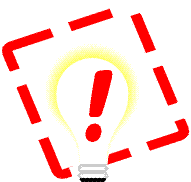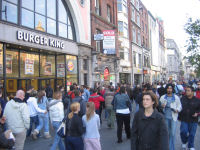Mon 12 Dec 2022
Sentience
Posted by Marcus under Philosophy, Science, The Mind
No Comments
There is an essential something that makes us “us”. Buddhism and other Eastern traditions say that all animals possess a life essence that must be respected, if not treasured. This leads followers to protect the life of the smallest insect or worm, on the theory that the spark of animal life carries sentience. Buddhism seeks to minimize suffering, no matter what being suffers the experience.
Sentience implies or perhaps is defined by self awareness. The ability to experience life, using memory to flavor the experience with personal historical reference and emotion appears to give rise to sentience. Western thought has begun to recognize that non-humans share some level of sentience. Sentience implies understanding that there is something that is lost in death. Other primates, elephants, whales and dolphins are recognized as having some level of sentience based upon the observation of their apparent emotional behaviors and their recognition of death.
Everyone is quite sure of their own sentience – it is a personal experience. Sentience in other humans is evidenced by observing behavior and by communication. When another person relates an experience similar to our own, it provides reinforcing data to our observations. Other animals do not speak and cannot provide this confirmation, so the behavioral evidence of sentience is usually discounted. In a previous post, I proposed that consciousness, a prime component of sentience, is actually an action or process, not a thing. This, of course implies that we are sentient when we are conscious – and not so when in non-REM sleep.
Non-humans have different goals, needs and social structures than we do. What is important to a chimpanzee is different from what is important to us, and also different from what is important to bonobos or gorillas. Importance focuses attention, the stage for sentience.
The importance of something may be measured by the resolution of the tokens (words) we used in language. An example: For the typical American frozen precipitation is just snow, sleet, freezing rain and that’s about it. To a cross country skier there is blue wax snow, green wax snow and the dreaded klister snows, and stuff you can’t ski in. To a Finn, there are forty different words to describe frozen precipitation.
To a dolphin, the location of the members of its pod and the nearest school of its favorite fish are important. What else a dolphin cares about is currently beyond human knowledge. We know that their relationships with other members of the pod and play are important, but why, and in what ways? The tokens of communication it uses are made up of sonar location information that isn’t very revealing to us. Perhaps someone will program an AI to decode the sonar pictures that a dolphin uses to talk about its world and translate them to something that humans can understand. That might help us share the “dolphin worldview”. In any case, dolphin society has the tools to communicate what is important within its own circle. It is obvious we don’t well understand what they find important. What is dolphin art or dolphin music? Will we ever know, and if we do, can we ever appreciate it with them? Perhaps, we have learned to appreciate whale song, although we don’t understand it.
When I reviewed Douglas Hofstadter‘s book I am a strange loop I discovered his unit of measure of sentience, the Hoenecker. Doug coined the unit to designate sentience on a scale. The Buddhist sees the value of life and sentience in a kind of binary scale – all animal life is to be cherished, from the lowly worm to humans without discrimination, while the vegetable world is unworthy of veneration. Christians, on the other hand draw the binary sentience line crisply between humans – the image of God, and everything else. Hofsteader sees an analog scale ranging through all life, depending on the complexity of the interaction between the organization and its environment.
Humans see the world through an anthropomorphic prism. It is unfortunate that we look at other life and presume that the reactions of other life can be measured on a human scale. When we look at our pets’ behavior it usually gets measured on human scales, not on the scale of the particular species. Parrots are valued for their human speech, not their parrot communications. Dogs are appreciated for the tricks, yet few humans understand the complex social structure of the pack.
Douglas Adams, in Hitchhiker’s Guide to the Universe points out, with tongue in cheek, that humans are the third most intelligent life on earth, coming after mice, who are actually the three dimensional representation of a higher multidimensional life form, and dolphins, who knew to leave earth before the Vogons demolished it, saying “So long, and thanks for all the fish!”, leaving the humans who ignored the dolphin’s warnings to their fate. His humor makes the point that if we are not the most intelligent life form on the planet, our egos would obscure that fact from our consciousness.
At the risk of sounding heretical; sentience can exist at different levels. The sentience of beings is not only measured by the individual. We can take the bee as an example. The Hoenecker level of an individual bee is not very high, however the Honecker value of a hive is much higher than that of an individual bee. The interaction between a bee and its environment is be reasonably sophisticated, compared to a slug or worm. The honey bee’s brain, at 850,000 neurons allows a much greater resolution in its environment than the fruit fly with only 100,000, but the combined brainpower of the eusocial hive up to 40,000 bees share a high level of communication that provides a combined behavior that might be compared with that of a mouse or snake.
This aspect of connected sentience can be applied to humanity. Early humans shared information and decisions within a troop or tribe, as do chimpanzees and gorillas. As hominids left the forest canopy and inhabited the savanna and other environments, it became necessary to share information between tribes. This required sharing technology (spears, fire etc.) between tribes to survive, and to promote neighborly peace.
Group sentience then extended beyond the 20 or so tribe members to others within the 30 km world circle of a tribe. Daughters were sent for marriage to adjacent tribes, bringing skills, life patterns, genetic diversity and environmental understanding between tribes. Trading of tools, art and goods among tribes allowed all to improve their interaction with the environment. The shared knowledge of tribes was greater than the sum each, increasing sentience within humanity.
Literacy further increased human sentience. As the memory and knowledge of ancestors was shared across generations. Forgotten lessons in a tribe, a country or across the world are rediscovered through reading.
we should recognize that it is sentience which is worth celebrating and valuing, not a physical body. It is what we and all the other living creatures on earth DO with intention and attention that is important.

 We all have a personal reality, shared throughout society, more or less.
We all have a personal reality, shared throughout society, more or less.

 Pythagoras showed that the
Pythagoras showed that the 
 I’m visiting Dublin in the emerald isle for the first time, realizing that this place was under British rule for 700 of the last 750 years. I can’t help but realize that colonial rule doesn’t end well. It isn’t good for the natives, and in the end it causes lots of problems for the colonial power. Northern Ireland is still a terrible sore spot for both countries.
I’m visiting Dublin in the emerald isle for the first time, realizing that this place was under British rule for 700 of the last 750 years. I can’t help but realize that colonial rule doesn’t end well. It isn’t good for the natives, and in the end it causes lots of problems for the colonial power. Northern Ireland is still a terrible sore spot for both countries.